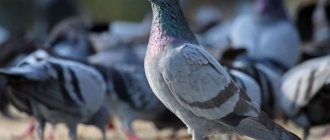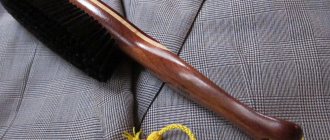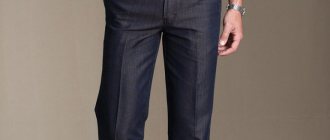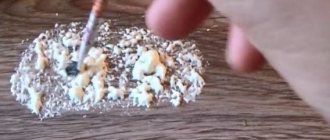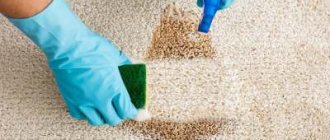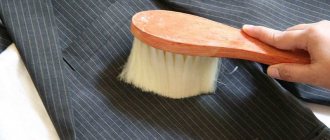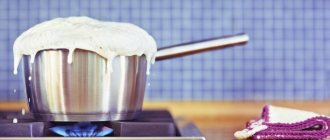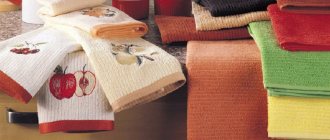If pigeons often fly in and sit on a windowsill or balcony, there is nothing good about it. It has been proven that these birds are tied to their habitat. Once you feed the birds by the window or hang a feeder, they will become regular guests and may even build a nest in this place.
It is no secret that these birds leave behind a large amount of droppings. It pollutes the surface and looks unsightly. But few people know that waste from the life processes of pigeons causes a large number of diseases that are dangerous to humans. These birds carry fungi and bacteria that cause encephalitis, histoplasmosis, psittacosis and other serious diseases.
In addition, pigeon droppings contain uric acid, which corrodes enamel and paint in a short time. This causes serious damage to the finishing of windows, window sills, balconies and the building as a whole. You will have to regularly update the painting or whitewash.
Some pigeons can even fly into an apartment through an open window or balcony sash, ruin things and make a mess. By the way, many of the feathered individuals are not even afraid of the presence of people. Therefore, it is important to repel birds in a timely manner. In this article we will learn how to get rid of pigeons on a windowsill or balcony.
Flying rats - why it is advisable to ward off pigeons
It has long been known that pigeons are carriers of parasitic insects, in particular fleas, which, in turn, often become sources of serious diseases. Bird droppings are very difficult to clean off, easily eating into the surface due to the high content of uric acid . After contact with guano, it only takes a short time for the most durable paint to be corroded.
In the process of cleaning the surface from the products of pigeon intestines, you must be extremely careful and use rubber gloves and a breathing mask. The fact is that guano can be a hotbed for the development of a colony of bacteria dangerous to humans, which can lead to diseases such as:
- toxoplasmosis;
- pseudotuberculosis;
- psittacosis;
- encephalitis;
- salmonellosis.
And this is not the entire list; there are also rarer diseases carried by pigeons that can infect not only people, but also poultry, for example, Newcastle disease. It is most dangerous for chickens. Tularemia poses a threat to humans, although its causative agent is quite specific and infections have occurred infrequently in Russia. But this does not mean that these beautiful birds only cause harm; they have many benefits. Therefore, the least stringent control measures are proposed below.
| Method | How and where to apply | pros | Minuses |
| Grids | For the protection of balconies, apartment and attic windows, ventilation hatches, flower beds and beds in the yard. | Affordable, reliable, versatile. | Not very aesthetically pleasing. |
| Spikes | On the eaves of houses, window sills, balcony railings, fences. | Prevents pests from landing on the surface. | Not very aesthetically pleasing. Needs to be cleaned periodically. |
| Wire/line | On the eaves of houses, window sills, railings, fences, roofs, facades. | Effectively repels birds. More aesthetically pleasing than spikes. | From time to time you should check the integrity and tension of the wire. |
| Electrical systems | To protect places and surfaces where flocks of pigeons flock. | Durable: service life - up to 8 years. Harmless, only repels birds. | High prices. Suitable for uninhabited places: roofs, industrial sites. |
| Chemical repellents: gels, sprays, naphthalene | Any surfaces are processed: window sills, cornices, roofs, railings, lawns, monuments, etc. | They cause a persistent reflex, forcing you to avoid the treated areas in the future. | Some compounds are toxic and require proper use according to instructions. |
Comparison table of the best pigeon repellers
| Name | Type | How to use | Price |
| Bird repellent gel | Chemical repellents | “Liquid nails”, leave a strip on the eaves, roof | 2200 rub. |
| Net | Net | As a barrier - fix it on the balcony, cover the beds, etc. | 220 rub. |
| Anti-landing spikes | Spikes | For protecting fences and gates | 170 rub. |
| Fi-Shock EAC10A-FS Super 525 Energizer | Electric fence | As a barrier in areas where birds are active | ~$29.99. |
| Orbit 62100 Yard Enforcer Motion Activated Sprinkler | Water repeller with motion sensor | Connect to water and install on a personal plot, positioned opposite the protected object | $45.30 |
| Bird-X Liquid Deterrent | Chemical repellents | Dilute with water and spray on open areas: lawns, roofs, lawns, etc. | $91.48 |
Poison for pigeons: is it worth using?
The most radical way to combat pests is physical destruction. However, before acting, it is necessary to clarify two issues: legal and sanitary-hygienic. Although pigeons are not a protected species, check your state's laws. If there is no ban on killing pigeons, you need to decide how to do it safely.
It may be worth contacting a specialist service, as toxicants registered for pigeon control are only available to professionals. For example, the DRC-1339 tool may only be used by USDA APHIS-Wildlife Services employees or persons working under its supervision. Avitrol, one of the most effective pesticides, is also limited in use.
– In order to obtain approval for Avitrol, you must adequately describe in your application how you will protect “non-target” birds from accidental poisoning. Be prepared to scare away all such birds that come to feed, even if you scare away the pigeons along with them. Their protection is your responsibility. When using Avitrol or any similar products, special teams must be working to collect dead birds, explains William H. Kern of Florida State University.
When looking for poison for pigeons, we must not forget that domestic pets can also become innocent victims, so it is advisable to use toxicants only away from residential spaces - on economic or agricultural sites.
– The use of repellents and poisons as part of a bird control program requires great attention to detail. Follow all product instructions and don't skimp on them; doing so may be dangerous or unhelpful, warn Robert A. Pierce and Kevin McGrath of the University of Missouri.
A mild measure of influence - deterrents
To prevent pigeons from flying up to the windows and settling on the balcony, it is enough to scare them away for a certain time, and the birds will consider that they have chosen a place that is not safe enough. If the house is located in a windy area, the simplest solution is homemade propellers made of bright glossy film. As they rotate, they emit a peculiar crackling and humming sound. You just need to secure a few on the balcony railing or window sill.
Another option in case there is little air movement is a tape from a tape cassette. Tied in short lengths to a stretched twine or clothesline, or twisted in bundles and secured to a driven nail, narrow strips of film rustle quite loudly, and even sway even in a weak wind. Pigeons usually don’t like this kind of proximity and prefer to stay away. Foil strips give the best effect, but they are short-lived.
The best solution is considered to be broken, unreadable DVD discs, which sparkle in the sun and rotate in the wind, and if you hang several nearby, they also make loud noises. Such pendants will last quite a long time; they can scare away birds for several years without losing much of their properties, especially if you periodically wipe the glossy side from dust.
To scare away pigeons, you can hang a “wind chime” from Feng Shui talismans on the balcony; ringing, swinging slats or tubes can become a source of sounds that are unpleasant for birds.
Don't kill in vain
All of the methods described above on how to remove pigeons that have taken a liking to your windowsill or loggia are among the “homemade” ones, quite humane and require virtually no costs. But professional inventors also made sure that window sills and loggias were protected from pigeon aggression.
- A net made of polymer threads - it can be easily installed on a surface of any configuration, and once installed, it practically does not block the view and at the same time prevents birds from landing. As the sisari grows weaned from using your area as a landing site, it can be removed and reinstalled if necessary.
- Special anti-landing spikes - they are easy to fix where there is a need, but a heavy and rather large flyer will not be able to overcome such an obstacle.
- Ultrasonic repellers that produce ultra-high-frequency sounds that are safe and inaccessible to the human ear and do not cause disturbance to anyone except birds - ultrasound vibrations cause them a feeling of anxiety and restlessness, so they quickly leave the place that is the source of unpleasant sensations.
If, after using all these methods, you have not kicked out the “tenants,” you may have to turn to the services of specialists from the sanitary and epidemiological station who fight bird scourge on a professional level, using, among other things, poisons.
And most importantly, when feeding birds with bread and grain from the windows of your apartments, do not create conditions that provoke the emergence of a situation with which you yourself will then have to fight.
Source: hozsoveti.ru
No landing - hedgehogs and spiked tapes against birds
If all sorts of pendants and rustling ribbons can spoil the view of the balcony and windows from the street, you can create an inconspicuous, but very effective line of defense on the window sills and railings. There are special elastic tapes on sale with an adhesive back for reliable fixation on the surface, and sharp angular protrusions located tightly. The step between them is such that the bird has nowhere to put its paws and it will not sit down.
Another type of obstacle that will certainly interfere with the landing of pigeons is a flexible metal strip of individual links, each of which is equipped with long, up to 10 centimeters, pins. They are not sharpened and are not capable of inflicting wounds on birds, but they will not allow a flying feathered creature to land on the windowsill. They are attached with double-sided tape so that they can be dismantled quite easily.
You can not buy a device similar to the second option, but make it yourself. To do this, you will need a strip for attaching the cable or a profile guide on which direct ceiling hangers for plasterboard are mounted. They need to be bent into the working position, like the letter P. You should purchase enough to cover the entire length of the window, cornice or balcony railing, taking into account fasteners every 2 centimeters.
To prevent birds from flying directly onto the open balcony and sitting on the floor and clotheslines, you should tighten a net, not a synthetic mosquito net, but a metal one. It is advisable to choose a fine-mesh option, so that the birds have no chance of squeezing through after landing outside. If there are bars on the windows and balcony, the mesh can be fixed directly on top of the bars.
How to get rid of pigeons on the roof
Pigeons are very unpretentious and can build a nest almost anywhere. To prevent them from nesting in the house, you need to ensure that all openings: attic windows, ventilation hatches, eaves - are closed. This is especially true for residents of the top floors.
- It is especially good to use mothballs in the attic because there are no people there - this substance irritates pigeons and can cause allergies in people.
- Barriers of any kind are the most effective means of preventing pigeons. Proponents of this method believe that expensive acoustic systems, stuffed crows, etc. do not frighten the bird too much - a pigeon living in an urban area is quite calm about many irritants.
- A special polypropylene mesh is attached to all surfaces and architectural elements of the building. It can be painted to match his color. This is a durable option - such a barrier will last at least 10 years.
- Thin stainless steel wire is almost invisible; it is stretched over railings and other surfaces.
- A more severe measure is an electrical discharge that strikes the bird when it tries to land on the surface. The discharge power is designed to disturb the bird without killing it. The device is structurally simple - it is a cable with a control unit.
Landing interference, harsh methods
Thorns also sometimes don’t look very nice, especially on the windowsill. A fishing line stretched in several rows will be almost completely invisible to unwitting spectators. If you are afraid that the bird will get tangled with its paws, you can tie a string to a strip of durable material and stretch the resulting device along the window sill. The wind will sway the fabric, and the tension will not allow the pigeon to sit down, even if it turns out to be not a timid one.
Many who have often encountered the occupation of window sills by pigeons recommend rubbing the surface with something slippery. For this purpose, for example, Vaseline is suitable as a completely harmless neutral substance. Birds, when landing, begin to slide, and as a result they understand that this place is inconvenient for living. Oils and fats are not recommended as they will attract flies and other insects.
Another option, proposed by experts, differs only in that the substance distributed over the surface must be sticky and retain this property for a long time. Birds won't like their feet being sticky. However, this method is quite controversial in terms of convenience for homeowners, since it will be difficult to wash the surface afterwards. There is also a certain risk of sticking when the desire or need arises to go out onto the balcony.
Conclusion
With any option for measures against pigeons, you should first talk with your neighbors and find out their point of view on the problem. Perhaps you will find like-minded people and fight birds together.
If you don’t want to destroy this feathered addition to city life, there is a way to solve the problem humanely. Get together with your neighbors and set up a dovecote in the yard. The pigeons will settle there and everyone will be happy.
The article does not discuss the use of toxic substances, since the decision about excessive numbers of birds and a possible threat to human health is made by specialists. In the event of a mass extermination of pigeons, teams must work to collect the dead birds so that other animals are not poisoned and there is no danger to human health during their decomposition.
Pigeons are accustomed to living next to people and receiving food from them. City birds are not at all shy; they often settle very close to people, right up to the balcony, window sill or roof. How to get rid of pigeons and why should you do it? The reason is not only the “autographs” that birds leave behind. We invite you to learn about the dangers of pigeons and ways to scare them away.
And again fear as a means of struggle - stuffed animals and scarecrows
A good solution in the fight against the colonization of an urban flock of pigeons would be to use a dummy that looks like a bird of prey. Birds that do not eat meat will never risk settling or even simply looking for a place to rest where their natural enemy is spotted. For this purpose, you can use either a real stuffed animal, which will cost more, or a copy made of weather-resistant material.
Stores sell ready-made figures that imitate a flying or sitting eagle or hawk. They are used by hunters, but it is quite acceptable to use them to scare away pigeons and other annoying birds. It is highly desirable to install the dummies so that they move, for example, on a spring or a rotating rod with a wind catcher, like a weather vane. An excellent place for them would be a dormer window in the attic or a cornice near the attic.
Another option for a scarecrow is a large doll or mannequin in the shape of a human torso, with shiny inserts in place of the eyes. A similar figure, suspended and in an unstable position, which begins to move with any gust of wind or is touched by a wing, will help to quickly repel pigeons. It should be noted that this option does not look particularly aesthetically pleasing as decor on a balcony.
Sharp noise, bright objects - festive measures to discourage birds
To drive away pigeons landing on a balcony or roof, you can take the initiative into your own hands rather than setting traps. For example, the explosion of a firecracker or New Year's cracker will permanently discourage birds from approaching the place where they were frightened. But this is a short-term measure and only against a certain flock or several individuals. After some time, other, unafraid birds may appear.
It should be borne in mind that such measures are appropriate in a private house with a large territory, where noise will not disturb the neighbors. In an apartment, this method can lead to complaints. A quieter way would be balloons with eyes drawn on them. Swinging and spinning in the wind, they will create confusion in a flock of pigeons and help scare away the birds for a long time.
Health
Pigeon excrement contains harmful microorganisms that cause serious pathologies in humans.
Encephalitis
When viruses carried by birds are activated, the patient becomes weak, the face and neck become numb, the temperature rises to 40, and the brain becomes inflamed. Encephalitis leads to severe complications:
- vision decreases;
- hearing deteriorates;
- the psyche is disturbed.
The pathology takes a long time and is poorly treated. Its pathogen can be found not only in the droppings, but also in the feathers of pigeons.
Psittacosis
Birds are affected by a viral infection, which is transmitted to humans by inhaling particles of fluff or through contact with birds. Chlamydia is present in pigeon feces and beak secretions. Signs of ornithosis appear after a day or 2 with malaise, fever, and dry throat. After a while, a cough occurs, chest pain appears, and the nervous system suffers.
Histoplasmosis
Fungal spores that multiply in damp soil, having entered the soil from pigeon droppings, are carried by the wind and, having penetrated the human respiratory tract, germinate inside the lung tissue. When the immune system is weakened, histoplasmosis affects internal organs and skin:
- The body becomes covered with boils and ulcers.
- The liver and lymph nodes are enlarged.
- A cough with blood appears.
- Pus is released with sputum.
The disease is dangerous for patients with low immunity. Long-term exposure is fraught with peritonitis, tuberculosis, encephalopathy, and the development of heart failure.
Torulez
Contact with pigeons can cause infection with a yeast fungus that affects the skin, lungs, and mucous membranes. The causative agent of a serious disease is found in bird droppings and enters the human body by inhaling air infected with fungi. When the immune system is weakened, torulosis affects the nervous system, which leads to an increase in temperature, impaired consciousness, convulsions and even coma.
Salmonellosis
City pigeons carry pathogens of intestinal infection, accompanied by fever, diarrhea, and dehydration. The disease has different forms; in the absence of timely treatment, it causes complications in the form of kidney failure, damage to the brain, joints, and a sharp decrease in blood levels.
Toxolplasmosis
With the feces of street pigeons, intracellular microbes are sent to the external environment, from where they enter the human body and move through the bloodstream to the lymph nodes. Toxoplasmosis affects:
The disease is very dangerous for women carrying a baby. The infection is fraught with miscarriage, stillbirth, and infection of the fetus.
Cryptococcosis
Fungi that enter the external environment with bird feces are transmitted to humans by inhaling air and begin to multiply, affecting the respiratory tract. Typically, patients with cryptococcosis end in recovery, but with immunodeficiency, the lungs, kidneys, and meninges suffer.
Listeriosis
Intracellular parasites that enter the body along with greens and berries grown on the ground with bird feces cause listeriosis in children and adults with weakened immune systems. The disease does not make itself felt immediately, but after many days, it affects the lymph nodes and the conjunctival membrane of the eyes.
If left untreated, bacteria begin to multiply and spread throughout the body, leading to damage to peripheral nerves.
Newcastle disease
The infection that kills pigeons is transmitted to humans through the conjunctiva and manifests itself as a runny nose and swelling of the lymph nodes. Only pigeons die from the disease.
Pseudotuberculosis
Infection with mycobacteria is transmitted through fluff and water that contains bird feces. The pathogen travels through the respiratory tract to the lungs and affects the lymphatic system. Signs of the disease are similar to those of tuberculosis.
Food spoilage
Pigeons peck not only grain, but also whatever comes their way. When they fly onto a balcony or loggia, street birds pollute everything with droppings and make nests. Once in the apartment through an open window or window, the birds tear open bags of cereals, peck at bread, and spoil vegetables.
Strong smells can help too
All animals have a fairly acute sense of smell. And they don’t like it when pungent odors interrupt information about the environment for a long time or when caustic substances clog their nostrils. Birds are no exception. With the help of ordinary mothballs laid out on the balcony, it is quite easy to wean pigeons from stopping there to rest or making nests. But it should be remembered that this substance is quickly exhaled in the open air.
Another option is to pour hot spices into the feeders mixed with grain. They will not cause long-term damage to the pigeons, but they will provide a few unpleasant hours. In such a place where unpleasant sensations await them, birds will not land for a long time. The disadvantage of this method is that the powdered spices are quickly blown away by the wind, and the need to replenish their supply, which will lead to additional costs.
Poison as a means of control is the worst option. Firstly, this is not humane, and secondly, the bird can die in a hard-to-reach place, and the smell of decomposition will poison the lives of the owners of the house and the people around them. As a last resort, you should use caustic gels mixed with feed, which, after tasting, will cause the birds to disgust the place where they were laid out.
Why do birds hit glass?
An increase in the proportion of glazing in buildings has led to birds increasingly crashing into glass windows.
Photo: modern glass, almost invisible to birds, is the reason for a bird’s collision with a window. This happens for several reasons:
- The bird does not see what is modern, practically transparent. Through it, she can see objects and not understand that there is a dangerous barrier in front of them. For example, these could be decorative plants in the room that the bird plans to perch on.
- Mirrored and tinted glass is also dangerous. At a certain angle, the sky or trees can be reflected in them, and the bird will not see the obstacle.
- In addition to daylight hours, birds are also in danger at night. During migration, migratory birds can fly at night, guided by the stars. Lights on the roofs of high-rise buildings can be perceived as stars by birds. In addition, when the light is on in the room, the bird will not see the glass.
At night and inclement weather, birds fly closer to the ground, which increases the likelihood of a collision.
Electronics to the rescue - modern methods of scaring away pigeons
In order not to listen to neighbors' complaints, it is recommended to make the fight against feathered robbers invisible and inaudible, and for this purpose an ultrasonic repeller is ideally suited. Similar devices are sold in specialized hunting stores. By setting the desired frequency, you can get rid of not only pigeons, but also rats, moles and other pests that annoy the owner of a country farm. Among such devices, bioacoustic ones are the most effective.
You can arrange a laser show for birds; flashes of bright rays will cause panic in individual individuals or a large flock equally. To do this, you can use both purchased electronics and homemade ones. It is good to supplement laser sources with a rotating ball, which is often used in discos. An ordinary strobe light will also be an effective measure.
Experts highly recommend trying the so-called thunder gun, powered by compressed air, when fighting pigeons. Using a simple control panel, the frequency of gas emissions is set. As a result, at certain intervals, claps will be heard, simulating the sound of gunfire. The only drawback is that the noise begins to irritate not only pigeons, but also people with pets.
What to poison
Since pigeons are constantly fed and pitied, so many of them have bred that dangerous diseases have begun to spread among people, and bird populations have to be controlled.
Lead
The heavy metal gradually accumulates in the body, and the pigeons do not die immediately. To get rid of birds rummaging in garbage pits, lead is mixed with grain or poured into water.
Wood sawdust
Silver metal is also dangerous for humans. In order not to use protective equipment when preparing poison for pigeons, sawdust is added to the feed, which swells in the bird’s crop.
Potassium permanganate solution
At home, a spoonful of potassium permanganate crystals is stirred in half a glass of water. A dark purple liquid is added to the food; the pigeon dies very quickly from such a treat.
"Diazinon"
The veterinary pharmacy sells a drug that kills insects that bother cows. The instructions tell you how to prepare poison for pigeons from Diazinon.
Disinfectants
Chemicals used to disinfect premises and kill germs serve as poison for birds in large doses.
Salt
If you feed pigeons by mixing grain with so much sodium chloride, their organs stop working and the birds quickly die. Just a few crystals of table salt added to food pose a mortal danger to pigeons.
Herbicides
Organophosphorus compounds, which are used to control weeds, cause hormonal changes in birds, which leads to their death.
Poisonous gases
Pigeons that live in ventilation can become poisoned if there is a malfunction in the heating system of the house. Birds lose their appetite and suffer from convulsions after inhaling carbon monoxide. Even a small dose causes death in birds.

